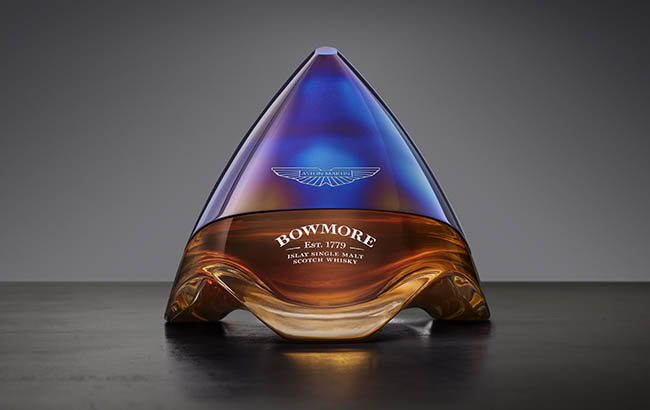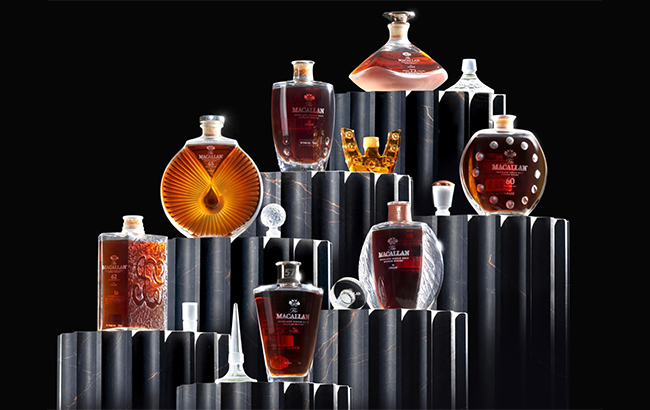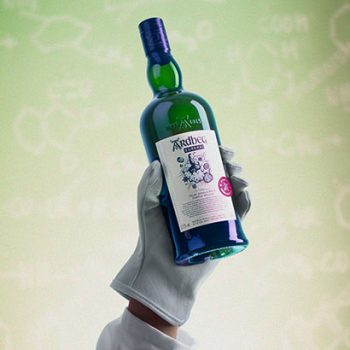‘Showpiece’ whiskies shape secondary market
By Georgie CollinsThe secondary whisky market is showing the first signs of stabilisation after two years of contraction, according to Noble & Co’s Whisky Intelligence Q3 2025 Report.

The quarterly report by Nobel & Co on the secondary whisky market notes that are three main types of buyer in the sector – the investor, the collector and the flipper, however in the report’s executive summary, Duncan McFadzean has noted that for a period, there was also a fourth – the consumer, who wanted to drink a particular whisky but could not get any bottles in the primary market due to the tight supply and demand situation.
“It is our view that the flipper and the consumer have largely withdrawn from the market in the current climate,” he said, referencing the turbulent global economy, inflation rates, and geopolitical tensions. “This leaves the investor and the collector still there – but the investor is being prudent about catching a falling knife and the collector is being selective.
“However, as we noted in our last report, there are signs of hope with the percentage of unsold lots falling – suggesting auctions are coming into supply and demand balance at lower prices.”
Stabilisation in secondary market
The report examines the secondary market in the period from April through July 2025, which it said has been one of ‘relative consolidation for fine and rare whisky’.
After two years of sharp swings – first a correction in late 2022 and into 2023, then uneven trading and a further decline in 2024 – the first half of 2025 has seen a market settling into ‘a new rhythm’.
During the period, secondary market value has decreased by 40%, falling from £8.9 million (US$11.9m) to £5.4m (US$7.15m). Additionally, volumes of sales were down by 26% compared with the same period in 2024.
However, the report notes that this isn’t any worse than the rolling 12 months, therefore suggesting an element of stabilisation in the market.
In the first quarter (Q1) of 2025, the market cleared 12,715 bottles for £3.3m (US$4.41m), with an average of £258 (US$477) per lot. In Q2 2025, activity rose to 14,725 bottles and £4.2m (US$5.61m), lifting the average lot to £286 (US$381).
If this continues into Q3, the report says there will be a clear positive trend that the market has turned.

In terms of brands leading the charge across the market, The Macallan is far and away the most dominant brand in the secondary market. Between January 2024 and July 2025, the Speyside producer achieved an auction value of just over £12m (US$16m).
Springbank followed at just over £3m (US$4m), with Bowmore just behind at approximately £2m (US$2.67m).
A handful of ‘cult’ distilleries – Ardbeg, Glenfarclas, The Balvenie, The Dalmore, Glendronach, Lagavulin, Glenfiddich, Port Ellen, Highland Park, and Brora – fill the rest of the top 10 table.
Also spanning January 2024 to July 2025, the leaderboard of brands by volume sales at auction shifts, although The Macallan continues to lead the pack with close to 19,000 bottles traded. However, the gap to the next tier is narrower than in value terms, with Springbank trading almost 15,000 bottles, showing its breadth of participation despite lower average hammer prices than The Macallan.
Ardbeg comes through strongly in third, with more than 5,000 bottles, highlighting the high turnover of its special release bottles and Committee bottlings.
Behind them lies a broad mid-table of Bruichladdich, Glenfiddich, Highland Park, Arran, Glengyle, Bowmore, Lagavulin, The Balvenie, Laphroaig, and Glenfarclas, each contributing thousands of bottles.

While The Macallan continues to dominate auction values by a considerable margin, Springbank now stands almost shoulder to shoulder in terms of trading volume.
A second clear trend in the data is the growing polarisation of the market. On one side, high-volume releases from cult distilleries such as Ardbeg and Springbank are sustaining steady liquidity in the £100–£500 (US$133-$668) range, keeping the market accessible for a broad base of collectors.
Trophy bottlings lead the way
At the other end, prestige and ultra-rare bottles remain the headline-makers – yet their prices have softened compared with previous years.
This divergence underlines a maturing secondary market, where enthusiasm for collectible daily-drinkers is offsetting the cooling at the very top end. Meanwhile, several Islay and Highland producers continue to provide meaningful liquidity, even if their average hammer values remain smaller.
The report indicates that the April–July 2025 auction season was driven by a mix of trophy bottles and collector mainstays.
At the top end, showpiece lots such as the Bowmore Arc-54 Iridos Edition and several Macallan Lalique decanters set the benchmark. The former achieved a hammer price if £112,500 (US$150,204), while the latter – The Macallan In Lalique 65YO, 60YO, 55YO, 50YO and 57YO, which hammered in late June 2025, clustered between £39,000 (US$52,070) and £47,000 (US$62,752), setting The Macallan prestige median for the quarter.
Yet the data also reveals that some prestige labels – The Macallan in particular – are now trading below the peaks seen earlier in 2025 or during the previous year. This points to a market where enthusiasm for iconic releases remains intact, but buyers are showing greater price discipline amid the broader slowdown already noted.
The report concludes that the data shows a functioning and stabilising market rather than a re-inflating one. The leaders – The Macallan at scale, Bowmore and The Dalmore on trophy-led share gains, and Springbank on mid-tier resilience – are positioned as expected, but with clearer price discipline from sellers than a year ago.
For sellers of exclusive bottles, the message is to lean into provenance, choose calendar windows that concentrate global bidders, and be realistic on guide prices for repeatable prestige decanters.
For buyers, spring 2025 was a market where selectivity paid, and where the right bottles – long-run series with impeccable back-records – held the line.
Related news
